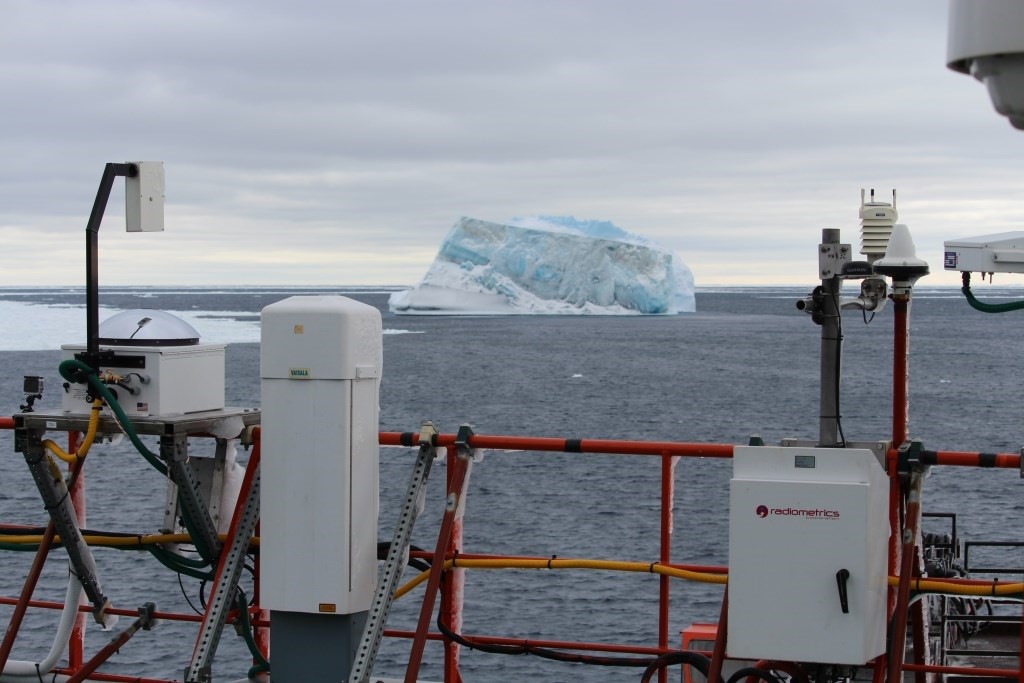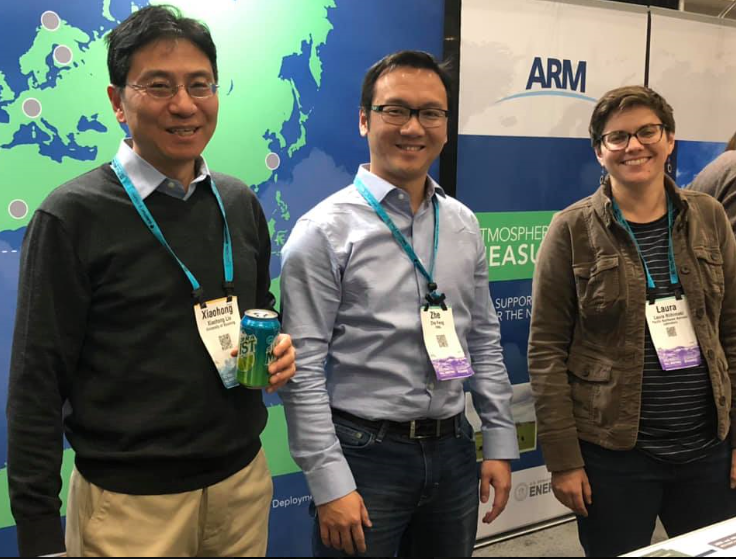ARM’s Scientific Impact Showcased at 2018 AGU Meeting
Published: 22 January 2019

More than 80 presentations and posters at the 2018 American Geophysical Union (AGU) Fall Meeting featured data from the Atmospheric Radiation Measurement (ARM) user facility. The scientific impact of ARM, a U.S. Department of Energy scientific user facility, can be found in summaries of the workshops, presentations, posters, and more.
About 28,000 scientists from around the world attended the 2018 AGU Fall Meeting from December 10 to 14 in Washington, D.C.
Sessions featured data from a number of ARM field campaigns, including new findings from two Southern Ocean campaigns—the Macquarie Island Cloud and Radiation Experiment (MICRE) and Measurements of Aerosols, Radiation, and Clouds over the Southern Ocean (MARCUS). These campaigns contributed unique measurements of clouds, aerosols—tiny particles in the air—and precipitation in the region between 2016 and 2018.
One presentation featured preliminary results from an ARM field campaign aimed at improving representations of marine boundary clouds in models. The Aerosol and Cloud Experiments in the Eastern North Atlantic (ACE-ENA) campaign combined airborne observations and long-term, surface-based measurements to study aerosols and low clouds in a remote marine setting. ACE-ENA involved two deployments with the ARM Aerial Facility’s Gulfstream-159 research aircraft: summer 2017 (June 15 to July 25) and winter 2018 (January 10 to February 20) near ARM’s ENA atmospheric observatory on Graciosa Island in the Azores.
Other presentations included information on field campaigns such as Layered Atlantic Smoke Interactions with Clouds (LASIC), Multidisciplinary Drifting Observatory for the Study of Arctic Climate (MOSAiC), and Holistic Interactions of Shallow Clouds, Aerosols, and Land-Ecosystems (HI-SCALE).

A three-minute eLightning interactive electronic poster session explained the use of ARM data to improve solar forecasting to help manage solar energy in the electrical grid. Researchers are using ARM data to advance intraday and day-ahead solar forecasts. An enhanced Weather Research and Forecasting (WRF) model—WRF-Solar-v2—is being developed to address known shortcomings and to yield better forecasts. Model improvements include representations of low clouds, aerosol and cloud microphysics, irradiance variability, and using uncertainty quantification to better calibrate the model and characterize uncertainty.
Thirty-two meeting attendees volunteered at the ARM exhibit, using the time as “office hours” to talk about their research and connect more than 350 people to ARM resources.
AGU also recognized its 2018 Fellows, including former ARM user Steven Ghan, a recently retired atmospheric scientist at Pacific Northwest National Laboratory in Richland, Washington. AGU reserves the Fellow honor for its members “who have made exceptional scientific contributions and gained prominence in their respective fields of Earth and space sciences.”
Preparations are already underway for the 2019 AGU Fall Meeting, which will be held December 9 to 13 in San Francisco, California.
Keep up with the Atmospheric Observer
Updates on ARM news, events, and opportunities delivered to your inbox
ARM User Profile
ARM welcomes users from all institutions and nations. A free ARM user account is needed to access ARM data.


















